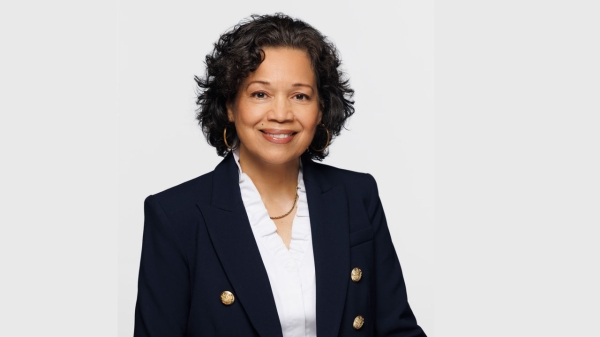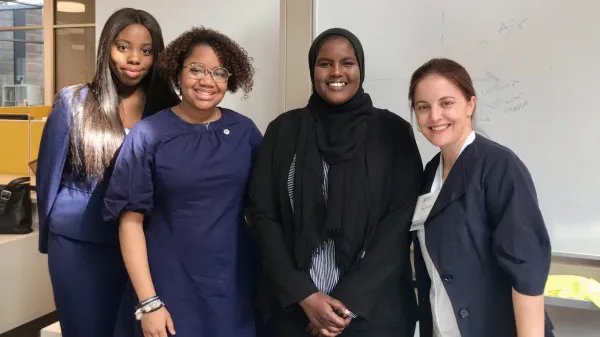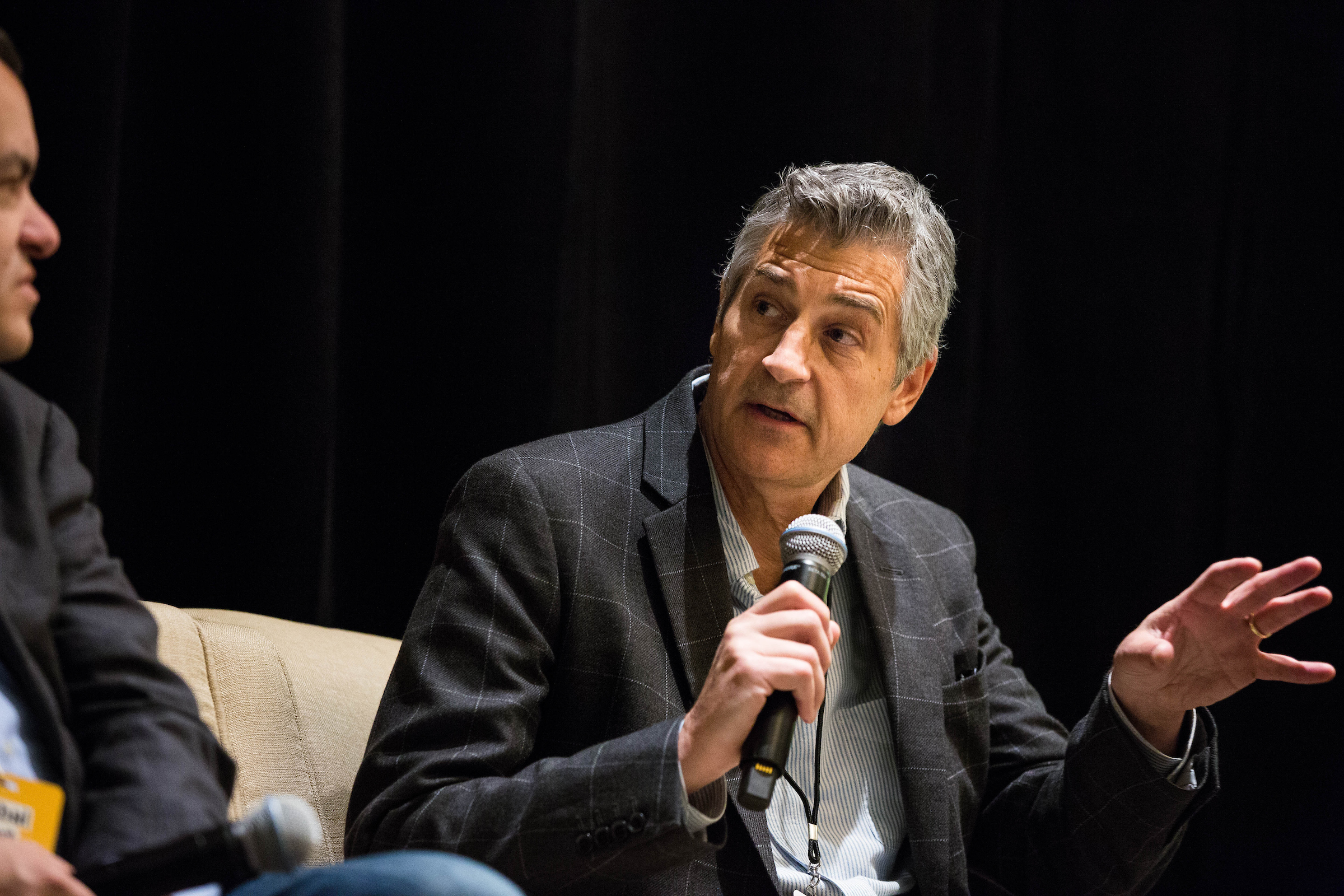Changing the way we play
First Global Sport Summit draws experts to discuss new innovations in sports, fan relationships, business models

The business of sports is changing the fundamental nature of the fan relationship, as well as the financial model and even the career path into the field, according to several experts who spoke at the first Global Sport Summit held by the Global Sport Institute at Arizona State University on Friday.
Kenneth Shropshire, CEO of the Global Sport Institute, said that the summit was meant to share practices that work best.
“When we get together again next year, think about what steps you’ve taken to make sport be more positively impactful,” said Shropshire, who is also the adidas distinguished professor of global sport.
“How can sport be used in a better way than it is to make lives better?”
The summit brought people from different areas of the world of sports. Here is what they had to say:
For the fan, it’s about more than a good seat
Andy Gorchov, general manager of the University of Phoenix Stadium: “We are competing with the couch at home but the stadium experience provides something you don’t get on the couch — to participate in a singular event that’s at a scale beyond everyday life. We work 365 days a year to focus on 10 days a year.“
Chris Richardson, ASU IT development who is developing interactive technology for Sun Devil Stadium: “The Stadium 365 initiative will be 365-day access to certain services, whether it’s an employee here to go for a run or someone who’s going there to showcase something about ASU or to go to a concert or a farmers market.”
Graham Rossini, vice president of special projects and fan experience for the Arizona Diamondbacks and an ASU alum: “We talk a lot about our mindset of ‘find a way to win even if we lose.’ Don’t let the wins and losses dictate whether you come out to the ballpark. There’s a lot to do when you get out there. The days of coming in, sitting in a seat and focusing on a sporting event for three hours are over. The stadium lends itself to exploration.”
Bryan Sperber, president of ISM Raceway, formerly Phoenix Raceway, which is currently being completely renovated: “Never before in the history of sports have we seen this disruption. Most of the younger fans have grown up as participants because of the device. They’re not wired to watch someone else do something for three hours, but our business model is watching someone else do something at a high level.
“In our project, it’s less about watching every play and more about a social event that takes place in an arena. We’re trying to create venues within the venues. As we build our infield we’ll add two bars and technology that’s interactive no matter what going on in the racetrack. We challenged our architects to create a way for fans to see the NASCAR garage and see the race teams working on the cars. They can take selfies and talk to the drivers and the teams.”
Lyndsey Fry, Olympic silver medalist in ice hockey, speaks about her youth sports experience during the "Sports for Youth Development" panel session at the Global Sport Summit at the Palomar Hotel in downtown Phoenix April 13. Photo by Deanna Dent/ASU Now
What you need to work in the sports industry
Josh Rawitch, senior vice president of content and communications for the Arizona Diamondbacks: “Whenever anyone tells me they want to work in sports and if they’re at a school with an athletic department and they’re not involved in it, it tells me they’re really not that interested. It’s right on your campus.
“When I was with the Dodgers 15 years ago, it was straight PR and we were doing game notes and setting up interviews. To me the single biggest thing that’s changed our job is social media. We have to be feeding the beast constantly. It pushed us to be this content factory and do videos and use our graphic designers. To those who want to get into this world, you have to be creative. I push everyone around me to think of something different from what we normally do. What new food item can we come up with? What new platform?
“When I was an intern at the Dodgers I stumbled on the assistant general manager’s office and he said, ‘You have to learn Spanish.’ I took it and studied abroad in Spain. I pushed myself to use it. I backpacked around South America. It is so incredibly useful to me.”
Nicole Taylor, public relations manager for Position Sports marketing agency, handling communications for Naismith Memorial Basketball Hall of Fame, and an ASU alumna: “I knew I would work in sports from age 5. I am a fan and I found myself in so many positions that money can’t buy, like being in a room for a player’s biggest moment.”
“As a part of the NBA Associate Program (development program), what do I think made me stand out? In school I had taken a lot courses that prepared me for cultural appreciation. So often we see sports through the lens of a white male. Even if you don’t know it, have an understanding that it’s different from what you’re used to. So it’s being able to go to China and deal with them on credentials.”
The business of esports is booming
John Pierce, an ASU faculty associate who teaches the first-ever course on esports in the W. P. Carey School of Business: “In 2015, esports was a $323 million industry and last year, it was $696 million. By 2020, it’s expected to hit $1.5 billion. Unlike the traditional sports world, 90 percent of the people who watch it also play. It’s happening with or without the student services or the athletic departments. It’s happening in the high schools; it’s happening with 9 to 11 year olds.”
Mike Nealy, executive director of the Fiesta Bowl, which hosted the recent Overwatch college championship: “The most common question I get is, ‘What is it?’ There’s a lot of money being made on this. A kid can sit in his basement and get on Twitch and make money. Can you image the NCAA trying to get its arms around this? Any small school in the country can get up to speed quickly and beat Penn State or the Ohio States of the world.”
Michael Udall, professional player and “Heroes of the Dorm” competition winner while a student at ASU: “The way I got started is I won this huge collegiate tournament. I was on ESPN. I won college tuition. I proceeded to drop out and become a pro player.
“I think one of the biggest turning points has been realizing that it’s a job. It’s something I put 80 hours a week in. Realizing you won’t enjoy every second is a big thing for me. I do love what I do. But it’s an industry and there’s a lot of money being made. I wake up around noon and work until 4 or 5 a.m. It’s a high-stress environment, especially with social media. Every time I make a mistake everyone on Twitter is blasting me for it. Burnout is a big issue. Every minute I’m not playing, someone else is getting better.”
Partnerships make a difference
Mark King, North America president of adidas: “When I met Ray Anderson (vice president of Sun Devil Athletics) in the summer of 2014, our business in the U.S. was really struggling. One of the turning points was when ASU took a chance to leave Nike and put their faith in us. We were this German soccer brand and Ray saw that we could be different from that. We were not embedded in sport in North America and the first step was at ASU.
“Our brand represents the intersection between culture and sport. Young people are not just interested in the athlete but also in the social issues and the way they live their lives and diversity and inclusion and things that weren’t traditionally talked about in sports.
‘Now we look for athletes, male and female, that have good character, but what has happened is we love athletes who have a platform to make the world a better place. And if they’re acting in a way that brings attention to something or moves the world forward, even if there is controversy in that moment, we’re interested in that athlete.”
Jay Dieffenbach of the Arizona Republic answers a question about monetization during the "Future Models of Sports Media" discussion session at the Global Sport Summit at the Palomar Hotel in downtown Phoenix April 13. Photo by Deanna Dent/ASUNow
In a changing sports media landscape, content is still key
Adam Anshell, senior vice president of Stadium broadcast sports site: “What we found as a digital company is that no longer should a viewing experience be passive the way television was. The Facebook Live broadcasts are a great way to do that, where people comment during the broadcast. It gets them more involved and willing to come back.”
Stewart Mandel, editor of The Athletic digital sports site: “As a subscription model, (readers) expect it to be of a high quality. For the more long-form content, we hope it has nuggets you can’t get anywhere else. In terms of the people who cover the individual teams, the key word is authoritative. We want people to feel they got smarter.
“People are reading more sports content than at any time in history. When The Athletic goes into Arizona it means they won’t stop reading the Arizona Republic, it means they’ll read both.
Jay Dieffenbach, content coach for professional sports at the Arizona Republic and azcentral.com: “Our death has been greatly exaggerated. We’ve been a digital presence since the 1990s. If you’re going to ask people to pay, the expectation is your writers will provide an elite level of content. That includes access as well. The expectation is that we’ll be on the road.
“As a Diamondbacks fan, you won’t get super constructive critical thinking unless you read it with us.”
More Law, journalism and politics

CBS News president to give keynote address at Cronkite School’s spring convocation
Ingrid Ciprián-Matthews, president of CBS News, will serve as the keynote speaker at Arizona State University’s Walter Cronkite School of Journalism and Mass Communication spring 2024 convocation. …

School of Politics and Global Studies director's new book explores mass violence
Why do people commit atrocities and why are certain groups, including religious and ethnic, more vulnerable to large-scale violence? These questions are explored in a new book by Güneş Murat Tezcür…

ASU faculty contributing to improvement of Wikipedia
Many academics have a love-hate relationship with Wikipedia. While the website has information about almost anything you can imagine, the credibility of that information is sometimes suspect. Tracy…

